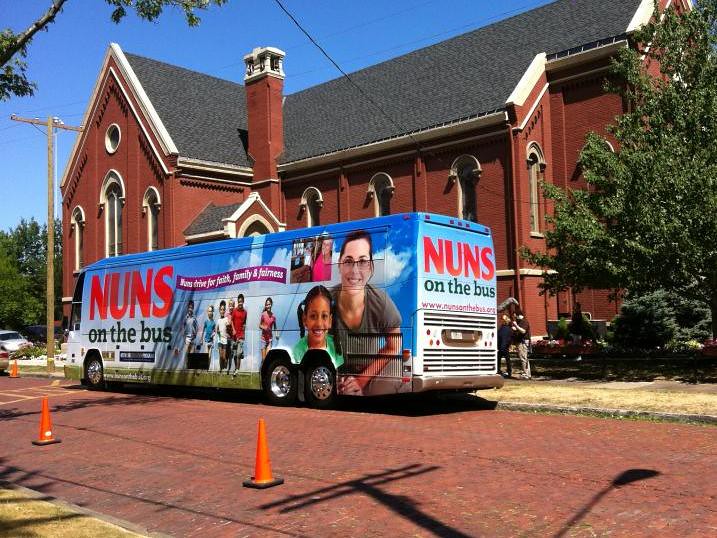You Ask, We Answer: What's a Block Grant? (And Why Nuns Care)
By
Mattea Kramer
Posted:
|
Health Care,
Social Insurance, Earned Benefits, & Safety Net
Karen from Colorado asks us, “What’s a block grant?” She said she’s been hearing that phrase a lot without knowing what it means – or if it’s important. It’s a great question, Karen, because block grants are important. They’re part of the reason a group of nuns recently began the Nuns on the Bus cross-country tour.

The nuns are protesting a budget that was passed by the U.S. House of Representatives back in March. The House budget would make deep cuts to many programs that currently assist low-income families, and those low-income Americans are the very people who the nuns serve in their daily work in soup kitchens and shelters. The nuns say they’ve seen increased need in recent years, and for that reason they expressed grave disapproval of the House budget.

Now, what does this have to do with block grants?
Two major federal programs that serve low-income Americans are Medicaid and the Supplemental Nutrition Assistance Program (SNAP), also known as food stamps. Currently those programs are part of mandatory spending, which means that anyone who applies for benefits and qualifies – under the eligibility rules written into law – must, by law, receive benefits. That’s intended to guarantee certain low-income Americans food security and access to health care. (These programs are also referred to as entitlements.)
The House budget would reduce funding for Medicaid as well as food stamps and convert both programs into block grants. Block grants are fixed-sum grants that give recipients (in this case, the states) broad discretion over how to use the funds. Once converted to block grants, Medicaid and food stamps would cease to exist in their current form, in which federal funding is paid out to support all eligible Medicaid enrollees and food-stamp recipients. Those programs would no longer guarantee benefits to all eligible Americans. Instead, funding for both programs would be deeply reduced relative to current and projected levels, and the states could use the fixed-sum pots of money not only for Medicaid and food stamps but for a host of initiatives within the health and nutrition sectors. And in federal budget parlance, the programs would be moved from mandatory to discretionary spending, meaning funding for these programs would be more accessible to lawmakers for future modifications or funding cuts.
For a side-by-side comparison of how the House budget compares to President Obama’s budget proposal and to a budget introduced by the Congressional Progressive Caucus, check out Competing Visions.